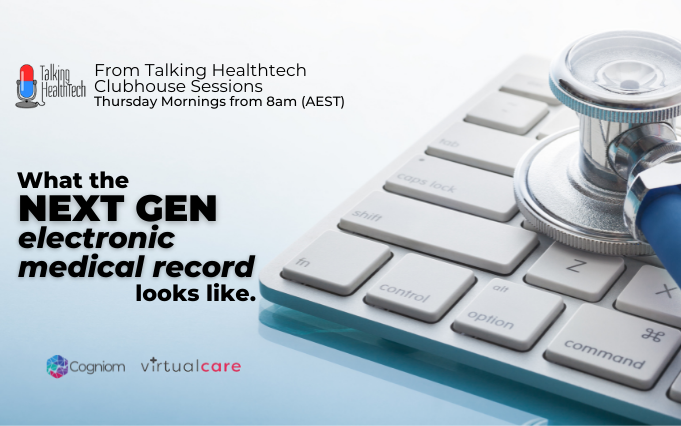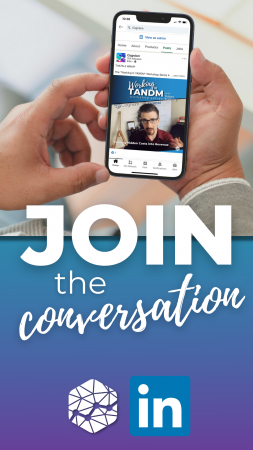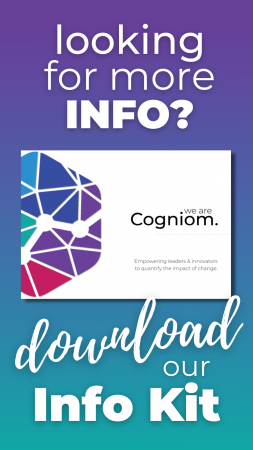From Clubhouse sessions with guest speakers:
- Jeff Smoot – CEO of Infomedix
- Phil Loya – Professional Services Lead at Cerner Corporation
- Malcom Pradhan – CMO and Co-founder at Alcidion
When the notion of keeping medical notes on a computer instead of on paper was introduced into healthcare, it was a pretty significant step into the world of innovation for the industry. A notion that, to this day, still has not been completely adopted across the board.
Electronic Medical Records (EMRs) were revolutionary, but have they kept up with technology that has come since? Are they living up to their full potential? And what does the future of the EMR look like?
The Clubhouse session on November 4th, we welcomed Jeff Smoot from Infomedix, Phil Loya from Cerner and Malcom from Alcidion to explore the topic.
Kicking off the session, when we consider what the EMR was originally built to perform compared to how a clinician needs an EMR to perform today, we quickly learn that one size does not fit all and that innovative projects are not a one-time job. While we mull over the gap between what it is and what we need it to be, we must also remember that before now we may not have had the tools to promote interoperability, which as of right now, have effectively left EMRs as storage space for typed notes.
But as Malcolm beautifully put it:
“Computers should be playing a more active role in helping clinicians and patients, rather than just being a passive data store for notes.”
While the original systems created great standards for pushing basic information, that remain as the foundation today, interoperability was not at front of mind when creating the legacy systems.
The recent introduction of FHIR capabilities has allowed the exchange of information to change, which as Phil explained, created a “pull kind of workflow instead of a push workflow.”
Now as we move into a time where data exchange occurs more freely in everyday life, the expectation that healthcare will follow suit is significant. When you remove those data silos you remove the need to reinvent the wheel every time a patient winds up in front of a different clinician or in a different facility.
The interoperability between EMRs supports the movement into population health and the ability to share information about a patient’s medications or allergies and add to the information collective which will become vital to the evolution and further updates in the digital space.
With EMRs as we currently know them acting as the foundations for healthcare data, opening up to other systems and applications to free up the exchange of information will also begin to bridge the gap between hospital interactions with other healthcare providers like GPs and aged care facilities.
Not only is the industry looking towards inclusive data banks so various clinicians from various locations can access patient data, but patients also are themselves looking to access their own data as well.
So, for the EMR to stay relevant, enhancing the ability to get access to information and into the hands of multiple interested parties is crucial.
And it’s not just how information is exchanged that’s changed. The habits and processes of clinicians have also changed. Their screen time has increased significantly with the introduction of the EMR, but until now no one has really considered the User Experience when it comes to the continual use of these systems.
Here we have the opportunity to adopt a “work smart not hard” mindset and create new processes that work better with the technology we are trying to adopt and reduce clinician burnout that has come from changed workflows that we are still trying to force into old constructs.
When we look to the future we know, or should know, that the current model of care will become obsolete and as it was mentioned several times during this session, its current state is simply not sustainable. As the generations that are accustomed to technology and digital experiences come through, we need to be prepared that their expectations of “information at the fingertips” is going to come with them.
The evolution of the EMR is a journey and the first step in that journey is to get the information off paper and into a space where it is accessible.
Healthcare and patient information is no longer a one-way street, and it is a trend that will continue to grow. It’s no longer about booking a one-time healthcare event. Healthcare now is continuous and includes a larger care community, from primary care to aged care to clinicians and patients and their families. As Phil noted, the quality and consistency of access to information is vital.
With that in mind, it must be noted that it’s not just about recreating paper notes on a computer screen. Phil mentioned that “something like” 60% of data points saved in an EMR were limited or of no use to the overall care plan of a patient. So, not only is the method in which we take notes evolving, but also the type of notes. As Malcom said, “What are the key data elements that are driving key decisions and what key data items need to be structured?”
Ultimately, the future of the EMR isn’t about turning old processes digital. It’s about all players coming together to understand what healthcare, and the delivery of, looks like now and into the future, how regulatory bodies can adapt to accommodate technology within the industry, consider who is involved in the patient’s journey and how they collaborate to deliver patient care.
At the end of the day, digital transformations are not a one-time implementation that sees one model work perfectly across all scenarios. Innovation is ever evolving, and we must continue to look towards the future habits of the greater population and how they will interact with platforms and exchange information.
We must continue to look outside the industry to see how other technology impacts those habits and how that can be adopted and integrated into a healthcare setting. Finally, we must work together to make sure all aspects of the healthcare industry remain connected, continuously learning from each other to ensure clinicians and patients alike have the best experience possible.





